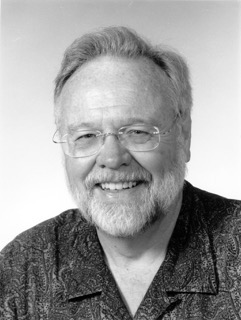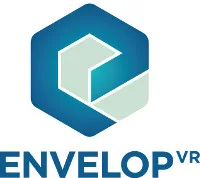One of the earliest pioneers in AR and VR, Tom Furness, has just signed on as a senior advisor of a new company called EnvelopVR (not envelope). To see why, I was able to have a phone conversation with him and CEO Bob Berry. What I heard was quite intriguing.
 Bob BerryBerry first started the conversation by noting that he became infatuated with VR after seeing a demo of the Valve HMD about a year ago. He saw that a number of technologies are converging now that will change the paradigm of AR and VR – and he wanted to be a part of this. Now, with $2M in seed money, and this pioneering visionary on board, they are developing their plans to change the AR/VR landscape.
Bob BerryBerry first started the conversation by noting that he became infatuated with VR after seeing a demo of the Valve HMD about a year ago. He saw that a number of technologies are converging now that will change the paradigm of AR and VR – and he wanted to be a part of this. Now, with $2M in seed money, and this pioneering visionary on board, they are developing their plans to change the AR/VR landscape.
Furness then chimed in to say that he basically invented VR back in the 1960s and AR a little later when he and colleagues founded one of the first commercial companies in the space – ARToolworks (founded in 2001). This was recently sold to Daqri – a company that is developing an AR-style helmet for enterprise applications.
 Tom Furness
Tom Furness
He went on to say that there is “too much fuss about the differences between AR and VR. You should really think of this as a continuum of applications with various levels of interaction with the real world.”
I then suggested that an immersive headset with a camera attached that allows you to see your hands and other objects might be hard to classify as AR or VR and might fit into the continuum definition. Furness and Berry agreed noting that Furness calls this application “augmented virtuality” while Berry prefers the term “Inverse VR.”
So how will Envelop differentiate itself in this crowded market, I asked? Berry said that their mission is to develop the “superglue” that will bind all of the disparate parts of an AR and VR experience together. “This is the missing element, which is why I was eager to join this effort,” commented Furness.
“What we are developing is a software VR shell that will first ingest the operating system – Windows, Linux, Android or iOS,” continued Berry. “It will facilitate the integration of all of the input/output features and optimize the application for the CPU and GPU hardware that is available. And, it will include a best practices and human factors review capability that will help identify when content will cause nausea, eyestrain or other problems that will turn off users to AR or VR. This will help prevent rogue applications from giving AR and VR a bad name.”
“Until now, there were so many hardware and software limitations with AR and VR that everything made you sick,” said Furness. “But the hardware is now pretty good so we need to focus on the content creation side to optimize the experience. This means focusing on things like reducing optical distortions and vestibular conflicts that are now becoming more important as the hardware matures.”
“Most importantly,” added Berry, “it will provide a platform for re-hosting legacy applications.” “We like to call this capability ‘transformers’,” said Furness, “as it will allow common applications, like Microsoft Office for example, to be re-imagined in VR with new user interfaces, new ways of showing data and more.”
Berry noted that they plan to focus on enterprise applications and that their customer base will be, essentially, everyone in the AR and VR ecosystem. “We want our platform to become the de-facto standard that developers use to bind together a bunch of proprietary and incompatible subsystems and solutions.” That is indeed a lofty and worthy goal.
“We are even thinking about developing a VR/AR content rating system to provide feedback for end users and developers,” stated Berry. “But we are not sure if this should be a popular open rating approach or done by a legitimate third party. “Nor do we know the best rating criteria yet,” added Furness, “but it could include items such as camera movements, jump cuts, light movement and more.”
EnvelopVR is onto something here by providing a unifying platform to bring all the tribes together–seems like a good idea – if it indeed accomplishes its mission. – Chris Chinnock

